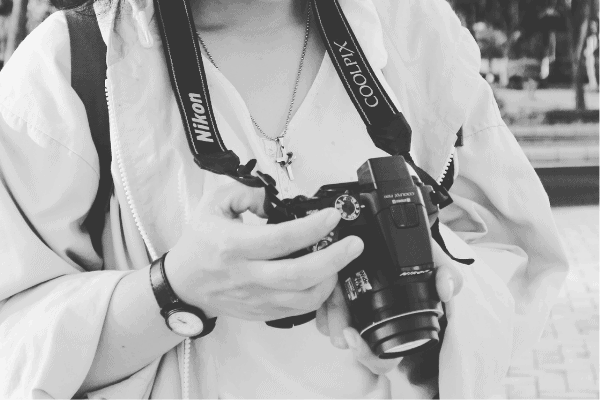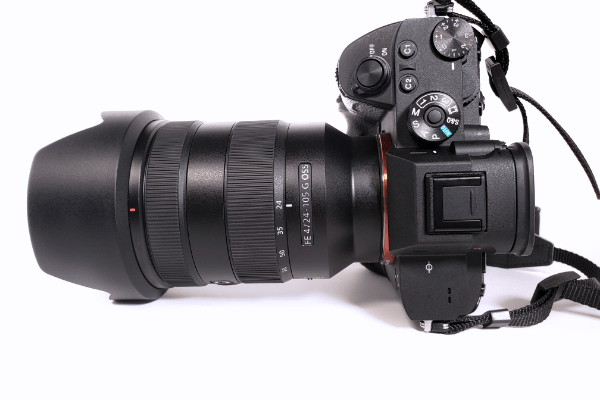Are you looking to buy a new camera and overwhelmed by choice? You’ve set the decision between Nikon’s Coolpix range or a DSLR camera. Still, it’s hard to decide, as you want to know you’re getting the best camera.
COOLPIX has an excellent choice for photographers who want an easy point and shoot camera with massive zoom capability and convenience. On the other hand, DSLR cameras have larger sensors, are versatile, and produce rich, detailed images.
This article looks at Nikon’s COOLPIX range and what distinguishes the popular point and shoot cameras from DSLR. Read on to discover which tops as the best camera for you.
Nikon COOLPIX: A Basic Overview
You’re heading to an event or going on holiday and want a camera that’s compact, robust, and has features that will assist you to snap stunning photographs easily. Then, Nikon COOLPIX cameras are for you. With COOLPIX, the emphasis is on facilitating your photographic experience.
With cameras starting at under two hundred dollars, the COOLPIX range will not bust your bank account. Despite their affordability, Nikon packs the cameras full of excellent features, including the ED glass in the lenses, as well as mega-powerful zooms that can also shoot Macro superbly.
COOLPIX cameras have built-in non-interchangeable optical zoom lenses that range from wide-angle (equivalent to 24mm in a 35mm format) up to focal lengths that exceed what many DSLR lenses deliver. They are also picture perfect for shooting full HD 1080 video and connecting to the Internet via Wi-Fi or Bluetooth so you can share your shots with ease.
Pros of Nikon COOLPIX
There are distinct advantages to the COOLPIX range. Here are the perks you can expect to gain:
- Range of zoom: With a zoom lens, you’re spoiled for options. Go wide on landscape shots or go tight or bring distant objects closer with the massive zoom capability that some of the cameras offer. The Nikon COOLPIX P1000
has a powerful zoom (3000mm), which can travel you to the moon and back for out of this world shots. These cameras are also capable of Macro shots, so you can go in close and pick up intricate detail.
- Convenient: Sometimes, you want to grab your camera, point it, and know you will get a great shot without the hassle of managing light balance, focus, or worrying about shutter speed. COOLPIX cameras do just that.
- Lightweight and compact: These are go-anywhere cameras that you can carry easily on your person. The biggest, most powerful, and fully-specced camera in the COOLPIX x range weighs 49.9 oz. (1,425g) while smaller models like the Nikon COOLPIX A1000
weigh just 11.7 oz (330g).
- Shooting modes: They offer choices to adjust your camera’s settings so that it does its best work in specific locations. Plus, you can also set some models to programs that give you control over the shot. Vary aperture, ISO, shutter speed, or go fully manual as you gain confidence. Alternatively, put it to auto for extreme ease of use and fantastic shots.
- A robust, weatherproof design for extreme conditions: It allows you to take your camera anywhere. If you have a waterproof model, you can even take it diving. The design makes these a go-anywhere camera.
Cons of Nikon Coolpix
Despite the many advantages of COOLPIX, they have their downsides, which we’ve listed here:
- Small sensor: COOLPIX cameras are compact, which is a brilliant feature. However, the compact size is achieved by compromising key components like sensor size. Since the sensor in all COOLPIX cameras is just 1 2/3 inches (4.2 cm), the cameras lose functionality, and image quality, while very good, suffers. Expect noise in low-light settings and when zoomed in on a subject.
- Limited F/stop: The compact lenses result in glass that does not offer much range in depth of field. The P1000 has a minimum F/stop of 2.8, and its maximum is F8. Mid-range cameras go from f3.4-6.9, fine for everyday shots.
- Limited ISO range: It signals a drawback of the small sensor. ISO stretches to around 6400 only. Expect your COOLPIX to underperform in low-light environments and noise to creep into your photographs.
The most significant complaint is the range of performance. If you want to shoot general shots with some nice soft background or landscape shots with a considerable depth of field, then a COOLPIX camera delivers.
If you know for a fact that you’re a camera confident and want to get more hands-on with a versatile camera that produces fantastic shots in a variety of situations, consider a DSLR.
DSLR: A Basic Overview
Whether you’re looking to leap from bridge cameras to extend your photographic skills or intend to shoot in challenging settings, DSLR cameras are versatile and, as your skills grow, the DSLR will match you. With a DSLR, you gain a camera with interchangeable lenses and bigger sensors, so your images will be rich in detail and color.
The elements that give DSLR cameras their edge is that photographers can select high-quality, pro-grade interchangeable lenses. With the right glass, you can expect to develop your photographic style, vary the depth of field, and shoot even in low-light situations.
Nikon rightly created the Coolpix to hit the sweet spot for a market looking for easy-to-use cameras that deliver good quality images, but consider the DX range of DSLR. It has many positive features of the Coolpix cameras, plus the positive attributes of DSLR.
Take, for example, the Nikon D3500, which has a price tag comparable to the A1000. It has a 23.5mm x 15.6 mm sensor and 24.2 million megapixels; ISO ranges from 100-25,600, and the ergonomic camera body measures 3.9 inches x 4.9 inches (97 mm x 124 mm). Without lenses attached, the body weighs 12.9 oz. (365g).
If you are concerned about familiarising yourself with a DSLR, the D3500 comes with a user-guide built into the camera to guide you around its features.
Pros of DSLR
Here’s a summary of the advantages of DSLR cameras:
- Interchangeable lenses: They give you a greater range for shooting in different environments. Whether you want to shoot landscape, wildlife, or portraits, the ability to change lenses gives you adaptability.
- Entry-level DSLR models: They are designed to make a budding photographer’s experience with their camera easily, as they build confidence and come to understand how different settings affect the image.
- Image quality: It is everything with DSLR, and that’s why their sensors are larger, and the lenses offer features like Image Stabilization, special glass to reduce chromatic aberrations, etc.
- Range of F/stop, ISO lends to versatility: It means you can develop your photographic style. There’ll be no frustration with limitations imposed by a fixed-lens camera; instead, you can have soft bokeh for portraits or pin-sharp detail for landscape photography.
- A DSLR that's as easy to use as a point and shoot camera
- Compact, comfortable design that's great for travel and special events
- Image sensor that's 15x larger than those used in typical smartphones for sharper, clearer pictures
Last update on 2025-06-07 / Affiliate links / Images from Amazon Product Advertising API
Cons of DSLR
We could continue adding to the positive aspects of DSLR; instead, we’ll outline the drawbacks.
- With lenses added, they can be bulkier than Coolpix: DSLR camera bodies are ergonomic, but your camera gets bulkier once you add a zoom lens.
- Too much camera: Sometimes, all you want and need is a point and shoot. Thus, a DSLR can be too much camera. Its dials and potential will bait you when all you want to do is keep it simple.
Check out how DSLRs compare with Webcams for Streaming.
Which One Should You Choose?
The advantages of a DSLR make them superior to COOLPIX cameras. You get crisper, cleaner images.
However, if you are an entry-level photographer who likes to keep things simple, COOLPIX cameras produce good quality images in most situations. With the range of focal length provided by the zoom and the sheer range of in-camera features, COOLPIX will fulfill your every need and then some, so long as you appreciate their limitations.
Final Thoughts
As ever, when trying to settle on which camera is better for you, we recommend trying out a DSLR and comparing it with a COOLPIX camera.
Also, create a list of your wants, needs, and desires for your camera, and see which camera ticks the boxes.
Sources
- Nikon: Nikon COOLPIX Digital Point and Shoot Cameras
- Nikon: Nikon DX Series Digital SLR Cameras
- Wikipedia: Nikon Coolpix Series
Recent Posts
QuickTime is a vital app for many Mac users, and if you’ve recently bought a new microphone, you might wonder how to use it optimally. QuickTime cannot record audio content if it doesn’t have...
Every microphone leaves a unique signature on the quality of its output. If you’re a podcaster trying to melt your way into your audience’s hearts, a muddy, distorted recording won’t cut it....




